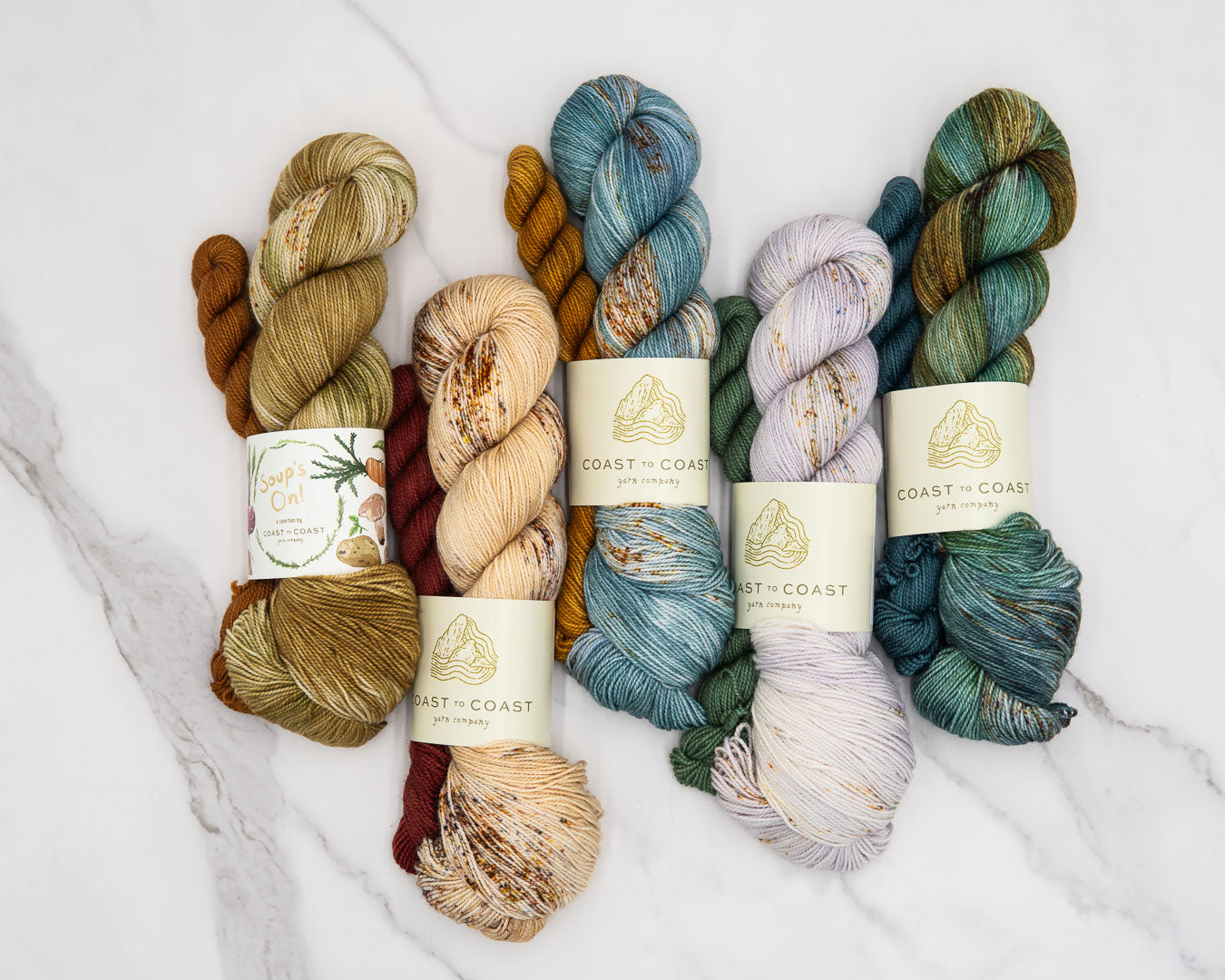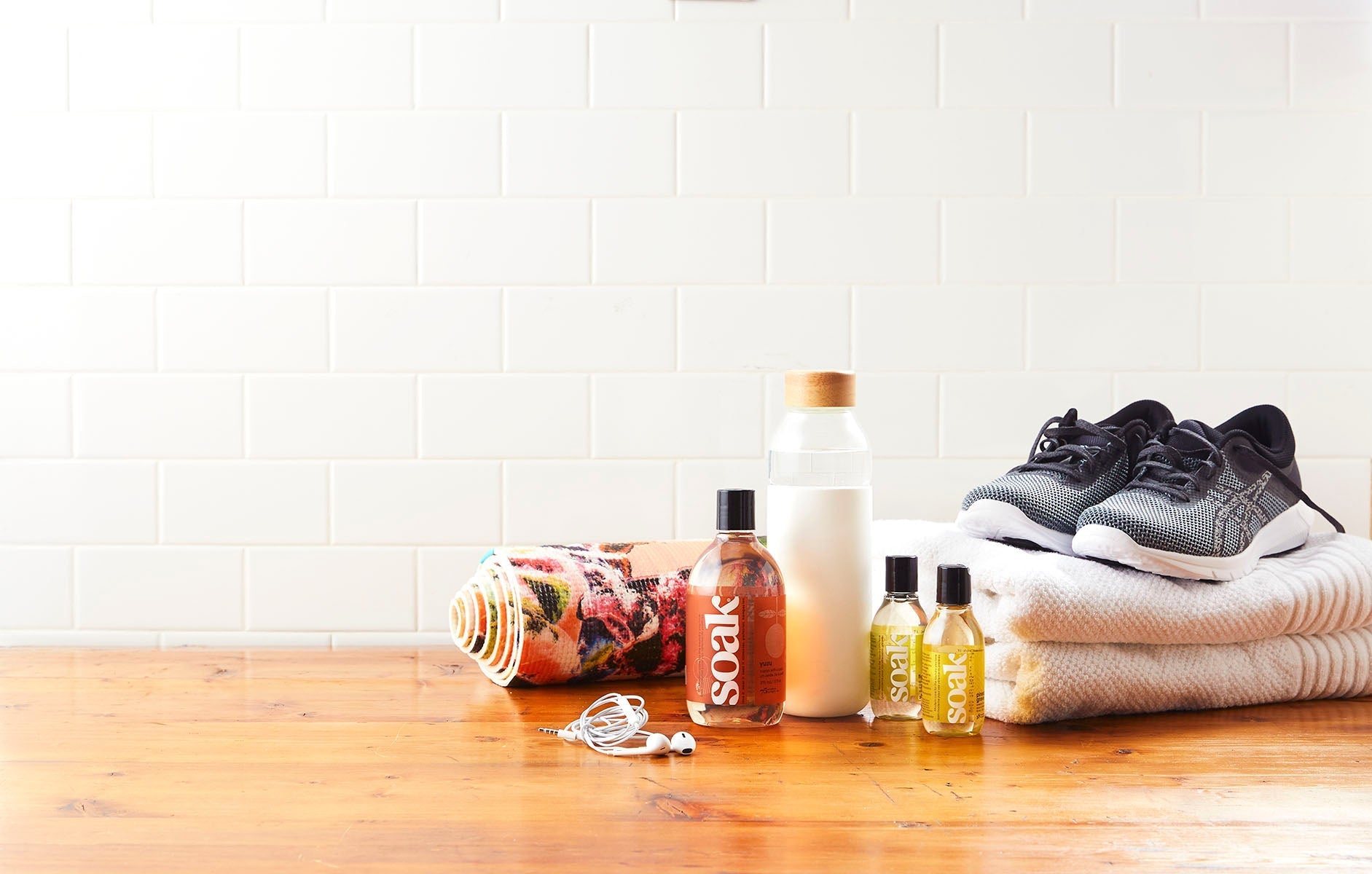
Skein, ball, hank, cone, and cake: yarn put ups explained
When you go shopping at a yarn store, you may have noticed that there's an endless universe of different shapes that it comes in. You might see skeins of yarn, hanks of yarn, cakes of yarn, balls of yarn, and even cones of yarn. What do all these different words mean? And what's the difference between a hank of yarn vs a skein of yarn? Does it matter what type of yarn packaging you buy? And how do you work from each one?
I've got your back! While these are all popular ways to store yarn, they all serve different purposes. And I'm here to explain the difference between all these formats of storing yarn (also called "put up"), and how to work from each type, or unit of yarn.
This post contains affiliate links which enables me to make content like this!
Hanks vs skeins
If you have shopped any kind of hand dyed yarn, then you know that hand dyed yarn often comes in a twisted shape like this:
The knitting community often refers to these interchangeably as skeins or hanks, which is totally fine, as long as you know the difference and that it really does matter.
The format you see above is actually a twisted hank and typically comes in 1.5 or 2 yard loops of yarn. They look like just a big ring of yarn, wound around and around. When a hank is twisted, people often use the word skein to describe it, but this is not exactly the same as an actual skein.
Hanks of yarn can be anywhere from as little as 10 gram "minis" to 4 oz in commercial yarn, but spinners like myself love to make 8 oz mega-hanks too. If you are a spinner and would like to enter your yarn into competition, most festivals require a 2 yard loop, so that's a good example of how standard this popular way of storing yarn is. As you can probably guess from the weight, this can hold any number yards of yarn.

Above you can see the hank before it's twisted into the familiar format.
Hand dyed yarn tends to come in the twisted hank format, as it's the easiest to dye on. However, some of my favorite milled yarns by commercial yarn manufacturers come in this format too, such as Purl Soho Linen Quill (below; affiliate link).

When the yarn is in hank form, you will need to wind it into a cake or ball format before you can use it. You can set the long loop of yarn around the back of a chair, a swift (usually in an "Amish" or umbrella swift format), and then wind it up into a ball with your hands, or into a center pull cake with a yarn winder (also called a ball winder) or nostepinne. Once wound, you can pull from the outside of the ball to work the yarn up, or from the center of the cake if you wound it into a cake format. If you don't have any of this equipment and need help, your local yarn shop may have a winding service.
When yarn is in the hank form, it's a side-loading mechanism, meaning the yarn comes off the storage format from the side. When you wind it, it does not add or remove a significant amount of twist.
Why do we store yarn in these twisted hanks when they are so inconvenient to use? Well, they come from the mill like that to the dyer, and they must be in this form to be dyed easily with typical techniques like kettle dyeing. They are wound loosely and hold no tension on any part of it. They just ARE. Once wound into balls or center pull cakes, they are held under a little tension and the tension is different on the center of the ball vs. the outside of the ball.
Below, you can see a center-pull cake of yarn (I usually pull from the outside anyway) that I was working up into what became my Marilla's Mittens pattern.

This is not the best format for storing in as wool yarns have memory and you may end up with a kinky, unpleasant mess in the middle at the end of the skein if stored that way too long. However, cakes of yarn can be very convenient for bringing to different places as they are very compact.
Once you have a yarn cake, the format often becomes an end-feed, where you're unwinding it in a conical shape above the cake, which can add or remove twist as you work. This isn't a bad thing--just something to watch out for. The best way to handle this is to only wind yarn from hanks when you need to use them.
And until then, you can store them just the way they are and the twisted shape of a hank is both lovely to look at and a practical way to store your yarn in a relaxed, easy manner.
What is a skein then?

Shown is one of my favorite staple wools, Purl Soho Knitting Yarn (100% merino) - Affiliate Link.
Skeins are wound into an oblong shape, and is a popular format for big box yarn stores from brands like Lion or Red Heart. This is also sometimes called a "bullet skein" or a "pull skein." It is loosely wound so that it maintains tension gently, so that it will not have the problems I mentioned with yarn before. The center of the pull skein can be pulled out to be used too, but I always find that it's the easiest to use from the outside of the skein. Typically, the outside end is tucked into the packaging or into the outermost layer of the yarn. All you have to do is identify it and it's ready to use. Cool, huh?
The downside of skeins to me is that sometimes, the end of the yarn at the center of the skein can be a little kinky and bent. But it's really not a big deal to me--it all works out in the knitting and the washing. Additionally, usually the center of the skein is not wound as tightly as they are when we use a ball winder at home.
One of the other advantages of the skein format, to me, is that it stays relatively neat together. Bullet skeins tend to flip themselves around as you unwind them, which makes them a pretty good side-feeding format.
Ball of yarn
Balls of yarn are exactly what you'd expect. They can be wound by hand or wound on a machine, and are ready to use. They also tend to tumble around in a bag or in a yarn bowl, meaning that it's a side feeding mechanism and can be super similar to use as skeins of yarn.

They're an easy way to buy a sweater quantity of yarn and get going with swatching and knitting right away.
At lighter yarn weight, I see them hold about 50-100g, and at heavier weight yarn, mostly in 100g formats. There are a lot of great options of yarn that come in this format, such as the entire Knitting For Olive and De Rerum Natura ranges in our shop.
Cones of yarn

Cones of yarn are a very common format for weavers, and less so for knitters and crocheters. They are yarn wound on a conical shape on a cardboard "cone," and in fact, a lot of yarn has been in this exact format before it arrives to you as a hank, a ball, or a skein. Mill-dyed yarn is often put on cones during the dye process!
The most important thing you need to know about a cone is that if it was made for weavers and not knitters/crocheters, it will not have been washed to remove spinning oils and to "set" the yarn before sale. The best practice for finishing yarn is typically in the step before the last thing it's gonna be come.
For knitters and crocheters, that's before you make it into a sweater or accessories. But for weavers, that step comes after weaving! When you purchase a cone of yarn designed and marketed for weavers, just know that it'll behave differently and will bloom thicker than you expect it to be.
A good example of a yarn like this is Harrisville Shetland. Shetland comes in a lovely hank format (below), but also comes in a manufacturer cylindrical shape--cones for weavers (above). They are the exact same yarn, except that the hank has been washed and is ready to crochet or knit, and the cone has not. The cone is lower priced per yard, but you pay for that in the amount of work and guessing you might have to do once you have it in hand.

If you are set on purchasing a yarn in this shape, I recommend winding it into a hank, using a niddy noddy (in our shop) or an Amish-style swift. Then, tie figure 8 ties to secure the big ring of yarn in 4-5 places, and soaking it with a little wool wash.
Then, you can squeeze it out and hang dry, at which point it'll be ready to wind into a yarn ball or cake, just like any other hank. Winding yarn into a hank can require some practice, but it's a good way to save a little on yarn if you work with large quantities at a time.
Finally, I want to note that cones of yarn are an end feed format, so as you unwind it from the top, the twist can change. This got me in trouble once with some super highly twisted cotton for weaving that then immediately twisted back on itself and was really hard to untangle. Oops.
Anyway...
That covers some of the various ways that yarn is commonly stored in! There's a classic shape of yarn storage for everybody out there, and whether you prefer to work from a cake of yarn, or a cone, or a ball, or a skein... there's a whole world of yarn to explore.
To learn more about fiber, check out our Knitting Resources page. We've got great posts on how to wash your knits properly, and swatching without fear!






1 comment
I wonder if the term “hank” is an American thing. I’ve never heard the term used here in Canada (in my experience). We call hanks = skeins and skeins= balls.
Megan
Leave a comment
This site is protected by hCaptcha and the hCaptcha Privacy Policy and Terms of Service apply.